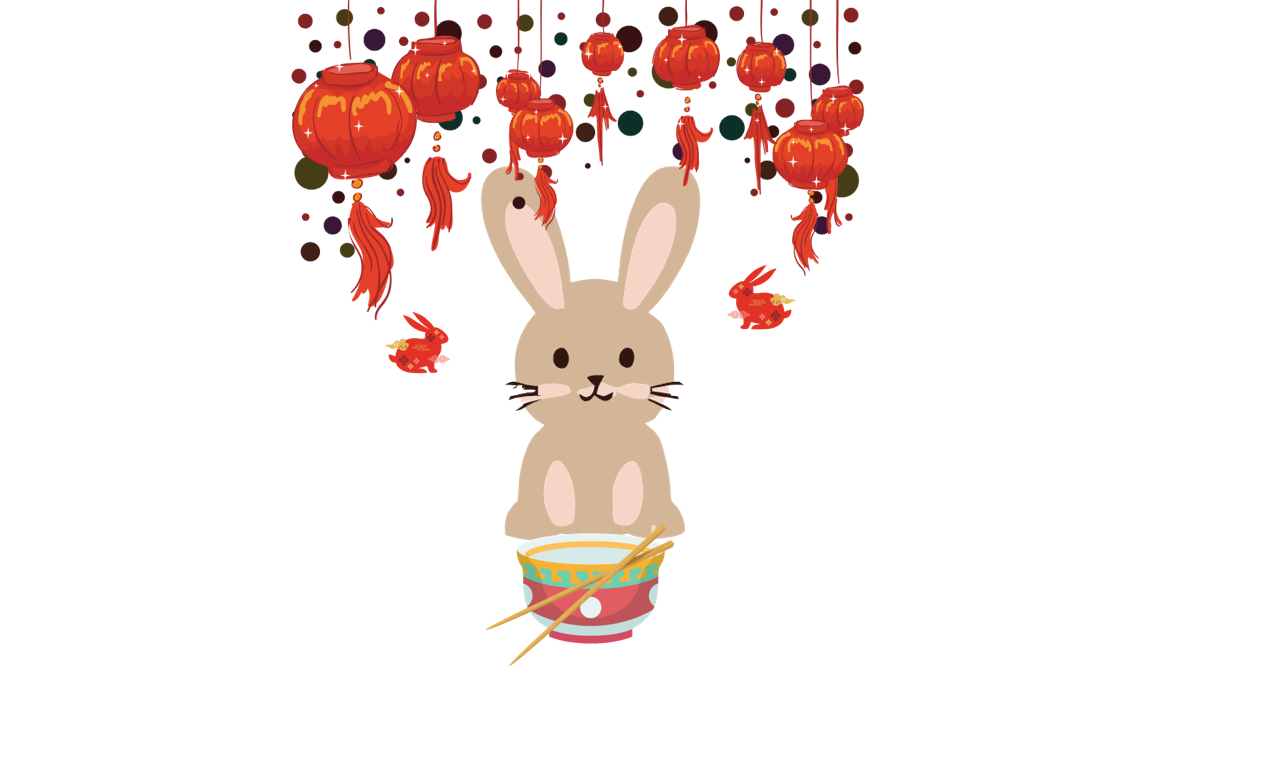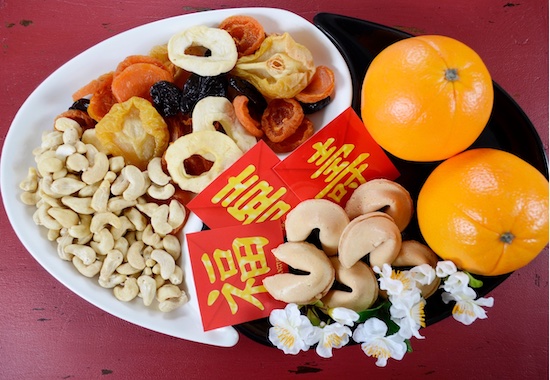Lucky Food to Eat on Lunar New Year’s of 2023

It will bring luck and prosperity to your house with the following dishes on the table of the New Year’s Eve.
______________________________________________________________________________________________________
This New Year is a family celebration, so all relatives gather around the festive dining table. The food and dishes used for the preparation are of particular importance.
It is said that the duck attracts fertility, the vegetable mix symbolises harmony in the home, the apple symbolises wisdom and peace, and the chicken brings prosperity, health and a close relationship with family members.
Of course, there are a few dishes that are specific to this time of year. Find out below what are the traditional dishes of Chinese New Year.
______________________________________________________________________________________________________
Bird’s Nest Soup

A soup that symbolises long life and prosperity, which is why it is good to be among the dishes on the New Year’s table.
Bird’s nest soup is a traditional Chinese dish made with the salivary nests of swiftlets, a species of bird found in Southeast Asia. The nests are harvested from cliffs and cave walls and are considered a delicacy due to their rarity and high nutritional value.
The nests are then cleaned, soaked in water and boiled with chicken broth and spices to create a savoury and flavourful soup. It is believed to have medicinal properties and is often served to promote health and longevity.
______________________________________________________________________________________________________
Fish
Fish is a traditional food that is often eaten during the 2023 Chinese New Year. It is believed to symbolise abundance and abundance and is often served whole to represent a family’s happiness in the year to come.
Fish can be prepared in different ways, e.g. B. steamed, fried or braised. Some common Chinese New Year fish dishes include steamed fish with ginger and green onions, fried fish with sweet and sour sauce, and stewed fish with vegetables.
_______________________________________________________________________________________
Duck or Chicken

Duck is a traditional food often served on the Chinese New Year table. It is believed to symbolise fidelity and prosperity and is often cooked in various ways, such as roasted, braised, or steamed.
Some common duck dishes for Chinese New Year include Peking duck, roast duck with plum sauce, and braised duck with mushrooms and vegetables. It is often served with pancakes, scallions, and hoisin sauce.
_______________________________________________________________________________________
Chinese Noodles
Noodles are a typical food that is often served on the Chinese New Year 2023 table. They are believed to symbolise long life and good health, and are often eaten uncut to represent the longevity of the eater.
Noodles can be made from different ingredients like wheat, rice or egg and cooked in different ways e.g. B. boiled, fried or roasted. Some common Chinese New Year noodle dishes are longevity noodles, fried noodles with vegetables, and noodle soup with meat and vegetables.
_______________________________________________________________________________________
JiaoZi
Jiaozi, also known as dumplings, is a traditional Chinese food often eaten during Chinese New Year. They are made by wrapping a filling of meat and vegetables in a thin dough and then boiling or steaming them until cooked.
Jiaozi are believed to symbolise wealth and good fortune and are often served with a dipping sauce of soy sauce, vinegar, and chili oil. They can be made at home or purchased from Chinese supermarkets or restaurants.
_______________________________________________________________________________________
Jai or Buddha’s Delight
Jai, also known as Buddha’s Delight, is a traditional Chinese vegetarian dish often eaten during the 2023 Chinese New Year. It is made from various ingredients such as mushrooms, tofu, bamboo shoots and soybean sprouts, and often with spices such as garlic, ginger and soy sauce.
Jai is believed to symbolise purity and peace and is often served as part of a vegetarian meal to honour the teachings of Buddhism. It is also believed to promote health and longevity.
_______________________________________________________________________________________
Fried Leeks

In the Mandarin language, the word leek sounds a lot like count. Perhaps that’s why the Chinese believe that leeks attract wealth, especially when eaten on New Year’s Eve.
Fried leeks are a common food often served on the Chinese New Year table. Leeks are cut into thin strips and then fried until crisp and often flavoured with spices such as garlic, ginger and soy sauce.
Fried leeks are believed to symbolise wealth and good fortune and are often served as a side dish or as part of a larger meal. They can be made at home or purchased from Chinese supermarkets or restaurants.
_______________________________________________________________________________________
Stir-Fried Shrimp with XO Sauce
Fried Shrimp with XO Sauce is a traditional Chinese dish often eaten during the Chinese New Year. Prawns are cleaned and peeled, then stir-fried with XO Sauce, a flavourful and flavourful sauce made from dried seafood and spices.
Often served with steamed rice and vegetables, the dish is said to symbolise good luck and prosperity. It can be made at home or bought from Chinese supermarkets or restaurants.
_______________________________________________________________________________________
Nian Gao
Nian Gao, also known as glutinous rice cake, is a traditional Chinese food often eaten during Chinese New Year. It is made from glutinous rice flour, sugar, and water and is often flavoured with seasonings such as red bean paste, coconut, or sesame.
Nian Gao is believed to symbolise a higher income or social status in the coming year and is often eaten as a sweet dessert or as part of a savoury dish. It can be made at home or purchased from Chinese supermarkets or restaurants.
______________________________________________________________________________________________________
Tray of Togetherness
The Tray of Togetherness is a traditional Chinese meal that is often served during the Chinese New Year. It is a round tray filled with various dried fruits, nuts and sweets, said to symbolise togetherness and unity.
The tray is often placed on the dining table and shared by all family members, and it is also used as a decorative element during Chinese New Year celebrations. It can be purchased from Chinese supermarkets or specialty stores, or made at home.
______________________________________________________________________________________________________
Lucky Fruits
Lucky fruits are often served on the Chinese New Year’s table. These fruits are believed to symbolise good luck and prosperity, and are often chosen for their auspicious names or for their looks.
Some common lucky fruits for Chinese New Year are oranges, tangerines, apples, grapefruits and grapes. These fruits are often placed on the dining table as decorations and also given as gifts to friends and family.
The Chinese New Year would not be complete without tangerines or kum, which represent gold. Families buy these fruits for their own consumption and as gifts when visiting friends and family.
Other fruits consumed during this festive period are litchi. Newlywed women are especially encouraged to eat these fruits because it means a marriage blessed with bright children.
Pomegranates are other loved and auspicious fruits because it is said that they bring many sons that will honour the family’s name.
Fruits can also be offered as gifts. Pomelo, or yellow melon, symbolises family unity throughout the year.
The traditional biscuits and sweets (such as coconut candies) cannot be missing during this time, as well as kua chi, roasted and peeled watermelon and pumpkin seeds.
Fa sang or peanuts (often shelled) are also popular and, like all the other foods consumed during this time, have an auspicious meaning because they are homonymous with “flourishing growth.”
Lotus seeds, or lin chi, represent the desire to have male descendants, and Gingko nuts symbolise silver ingots and, thus, money.
© Copyright 2025 Fengshui with Christine








